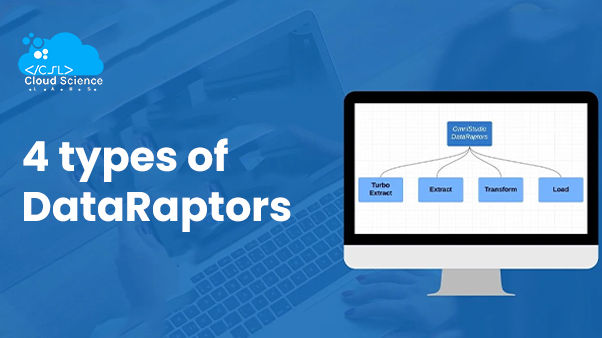Mastering Data Integration with DataRaptors in Salesforce OmniStudio
- Neha Gharpande
- Feb 14, 2024
- 3 min read
Updated: Sep 15, 2025
In today’s fast-paced digital landscape, seamless data integration is critical for delivering personalized customer experiences. Salesforce OmniStudio makes this possible with its powerful toolset, and at the heart of this is DataRaptor, a declarative tool designed to extract, transform, and load data efficiently within Salesforce.
Whether you’re building dynamic customer interfaces or streamlining backend processes, DataRaptors help you extract, transform, and load data efficiently inside Salesforce, all without writing a single line of Apex.

Let’s explore what DataRaptors are, how they work, and how you can master them to get the most out of Salesforce OmniStudio.
What is a DataRaptor?
DataRaptors are part of Salesforce OmniStudio’s data integration layer. They enable admins and developers to read, write, and upgrade Salesforce data without writing code. Essentially, DataRaptors act as ETL tools (Extract, Transform, Load), offering a declarative way to connect your OmniStudio applications with underlying Salesforce data.
OmniStudio provides four main types of DataRaptors:

DataRaptor Extract: Retrieves Salesforce data.
DataRaptor Load: Updates or creates Salesforce records.
DataRaptor Transform: Transforms data formats as needed.
DataRaptor Turbo Extract: Offers faster data retrieval for specific use cases.
Why Use Salesforce OmniStudio DataRaptors?
DataRaptors make data integration simpler, faster, and more maintainable. They bring significant advantages. Here’s why they’re so valuable:
No-code, declarative design: Build complex data integrations without code.
Reusable configurations: Configure once and reuse across OmniScripts or FlexCards.
Optimized performance: Extract only the fields and records you need, improving performance.
Seamless mapping: Use tools like the OmniStudio Data Mapper Extract to fine-tune data transformation.
Using OmniStudio Data Mapper Extract
When you need precise control over what data to fetch and how to shape it, the Data Mapper Extract comes in handy. The OmniStudio Data Mapper Extract is a powerful feature for defining how data should be retrieved and mapped.
With it, you can:
Map Salesforce fields to JSON nodes required by your OmniScripts or FlexCards.
Filter and structure data for use in the UI.
Handle nested and complex data without writing code.
Example of OmniStudio Data Mapper Extraxt:
Suppose you need to display customer details and related orders. You can configure a DataRaptor Extract to pull data from multiple objects, then use the Data Mapper Extract to shape the output JSON in a format that your OmniScript can consume.
Enhancing Data Transformation with OmniStudio Data Mapper Formula
Sometimes data needs to be enriched or formatted before being displayed/shown to users. This is where the OmniStudio Data Mapper Formula comes in.
You can use them to:
Apply formulas to create new fields, modify data, or combine multiple fields.
Format dates, numbers, or strings as required by your business logic.
Enrich data without additional Apex code.
Example of Data Transformation with OmniStudio Data Mapper:
You can use a formula to calculate a customer’s age from a birthdate field or concatenate first and last name fields into a full name.
Best Practices for Working with Salesforce OmniStudio DataRaptors
To master data integration with DataRaptors, follow these best practices:
1. Use Turbo Extract when possible: For simple, fast queries with fewer transformations.
2. Limit the number of fields: Retrieve only the data you need to optimize performance.
3. Structure JSON efficiently: Keep the data structure lean to reduce payload size.
4. Use formulas for light transformations only: Use the OmniStudio Data Mapper Formula for lightweight transformations; avoid overly complex logic that could slow down performance.
5. Test in different scenarios: Make sure your configurations work across varied datasets and user journeys.
Conclusion
DataRaptors in Salesforce OmniStudio empower organizations to build powerful, scalable, and efficient data integrations without code. Whether you’re designing complex business processes or building dynamic customer interfaces, understanding DataRaptors will help you unlock the full potential of Salesforce OmniStudio.
By mastering DataRaptors, you can:
Reduce development time
Improve system performance
Deliver personalized, data-driven interfaces faster
If you want your Salesforce projects to run smoothly and scale better, investing time in understanding DataRaptors is a must.
Next Step
Ready to start building smarter integrations?
If you’re ready to optimize your Salesforce data integration workflows, now is the time to explore DataRaptors in depth. Explore DataRaptors today and take your Salesforce data management to the next level!
Email at digital@cloudsciencelabs.com or visit www.cloudsciencelabs.com




Comments